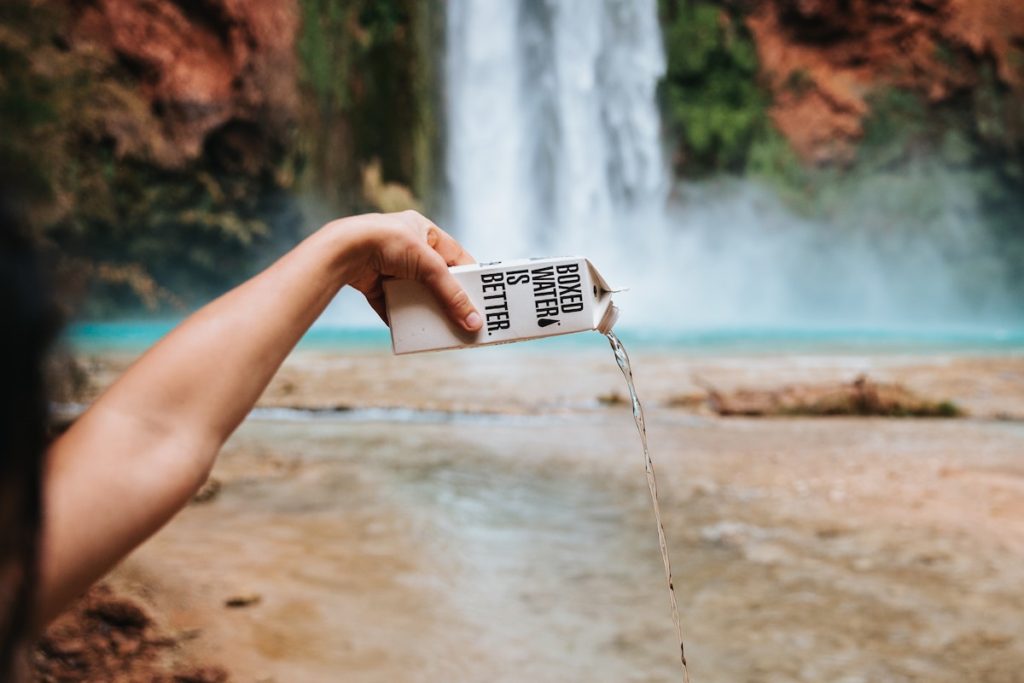The ability to avoid greenwashing is becoming more important as consumers seek sustainable alternatives. In fact, 60% of consumers are willing to change how they shop to reduce environmental impacts. This has led to companies incorporating sustainability throughout their supply chains; however, some are simply reworking their marketing campaigns.
Greenwashing is a marketing strategy used to give the impression a company or product is environmentally conscious. Identified by terms like “eco-friendly” or “green,” or images and descriptive words inspired by nature. Marketers target well-intentioned consumers and mislead them to believe they’re contributing to an environmental initiative when they are not.
How to Spot and Avoid Greenwashing
TerraChoice, an environmental marketing consultancy, classified the “Sins of Greenwashing” to help consumers assess sustainability claims and avoid greenwashing.
Hidden Trade-off
Giving the idea that a product is better by emphasizing a limited range of qualities (made with recycled content) without considering negative environmental concerns (energy and freshwater used in the manufacturing, carbon emissions).
No Proof
A green claim that cannot be easily proven or is supported by an unreliable third-party certification, such as packaging that claims to be made of post-consumer recycled materials without any proof or certification.
Vagueness
An environmental claim is poorly or broadly defined such that it misleads the consumer. Words such as “natural,” “pure,” and “eco-friendly” may imply a product is of higher quality or more ethical. Such as claiming chemicals are “naturally” occurring, which is true but not necessarily safe for human consumption.
Irrelevance
A green claim that might be true but has no relevance or is insignificant—products labelled as CFC-free when CFCs were banned in the 1980s.
Lesser of Two Evils
A marketer makes a valid green claim that distracts the customer from seeking better options. Such as fuel-efficient sport-utility vehicles or “green” insecticides and cleaners.
Fibbing
A green claim that is untrue or false. Such as labelling a product as Energy Star Certified, but it isn’t.
Worshiping False Labels
Using fake labels with words or images to give the impression a product is third-party endorsed, but no endorsements exist.

How to Spot Ethical Brands
The challenge is there are no global regulations or standards to enforce ethical business practices and marketing. This means it’s up to the consumer to find sustainable businesses that value the triple bottom line: profit, people, and the planet. Below are 5 tips to help you spot ethical brands so you can avoid greenwashing.
Business Ethos
Research the business by checking out their website. Does the business incorporate the circular economy principles, and do they incorporate sustainability throughout the supply chain?
Learn about the company’s story and its mission. Sustainable brands want you to know they support ethical business practices and will include examples throughout their website.
Ask yourself if the business is being honest, and are they transparent? Consumers want transparency and expect businesses to deliver on responsible materials and product sourcing, waste management and safe working environments.

Ask Questions (aka be a detective)
Be critical. When seeking sustainable products, it’s important to look for companies that take a holistic approach to product manufacturing. This means the company assesses multiple environmental considerations rather than just a single environmental issue.
Understanding the “full picture” will help assess if the business is truly implementing sustainable practices throughout a product’s lifecycle.
An example is banning single-use plastics, which is good for addressing the global plastic issue. However, some companies are simply looking for an alternative, such as paper or wood. This is an example of a hidden trade-off. Transitioning to paper products will lead to increased deforestation, increased atmospheric carbon, loss of biodiversity, soil erosion, and increased wildfires.
Keep in mind that a company that offers a product line with many sustainable products is more likely to incorporate sustainability throughout the supply chain.
Look for Eco-Labels (and verify them)
Read labels carefully. Check the wording of the claims and certifications to confirm the product is certified. Notice the difference between a slogan and a certified product, such as certified fair trade versus toxic-free.
This can be tricky because certifications can be expensive for a company to obtain and may lead companies to use aesthetically similar false labels.
There are many certifications out there, but here are some trusted sustainable certification labels.
- Certified B Corporation
- EcoLogo
- Green Seal
- USDA Organic
- Forest Stewardship Council (FSC)
- Certified Fair Trade

Look at the Packaging
Consumers are becoming more aware of the excess packaging of their products. A sustainable business considers this, especially as online shopping becomes the normal way to obtain our goods. Tip: look for businesses that allow you to select the type and amount of packaging your product is shipped in.
Many brands are turning to biodegradable or compostable packaging instead of plastics. If a business claims to support plastic-reducing initiatives, look at their packaging. Does the packaging support their claim, and are you convinced they really care?
Still Not Convinced? Contact the Business!
If all of your time and effort still has you guessing, reach out to the business or brand with your questions and concerns. Doing this lets the business know you value their products and your environmental impact.
Sustainable brands will be eager to discuss the details of their sustainability plans. You’ll learn a great deal of information and gain more respect for the brand. Remember, when you come across a sustainable brand, share it with your friends, family and community.
It may seem like a lot of work to buy sustainable products from ethical brands, but the more you pay attention and evaluate green claims, the easier it will become.




